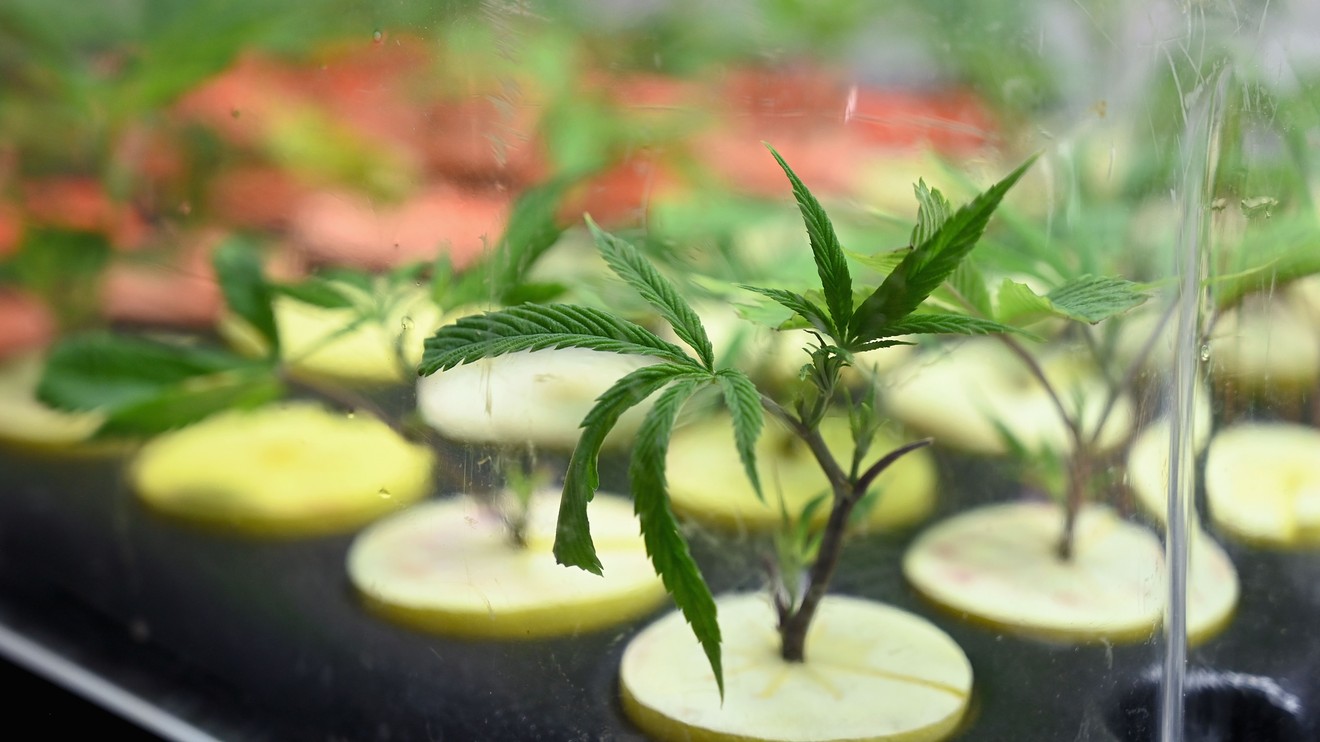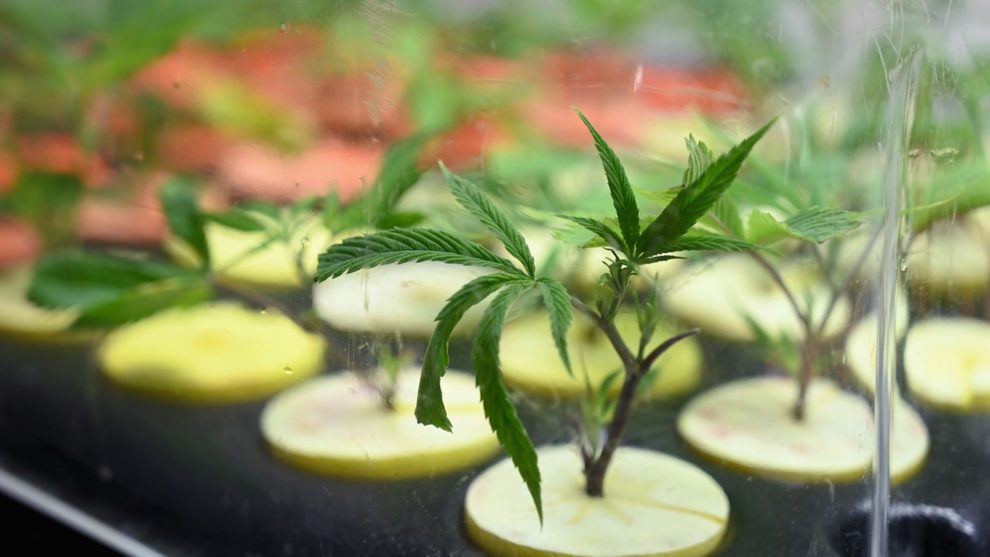
Cannabis stocks have sent investors on a wild ride in the past year.
Shares in the burgeoning industry had halved by the end of August compared with a year earlier, when they were pushed higher by bullish sentiment. Canopy Growth CGC, +0.36% and Tilray TLRY, +3.05%, two bellwethers, had plummeted even more — by 54% and 64%, respectively. The popular ETFMG Alternative Harvest exchange traded fund MJ, +1.36% had fallen 45%.
But cannabis investors, take heart. Cannabis stocks are about to get higher valuations. That’s because the selling became so extreme last month, marijuana stocks hit capitulation lows Aug. 28, the Bear Traps Report’s Larry McDonald wrote on that day.
He suggested investors take opening, one-third positions in the ETFMG Alternative Harvest ETF as a contrarian bet on the group. McDonald made a good call, even if he stopped short of saying go all in. Since then, cannabis stocks have rallied nicely.
But they have more to go. Capitulation lows are blow-off events in which most of the losers and weak hands finally throw in the towel. As such, they can punctuate a bottom by clearing the negativity, and serve as the starting point for a sentiment reset. All the bad news — and there is plenty of it — seems to be priced in. Yet several catalysts loom. They will continue to fire up sentiment.
Cannabis stocks do not have the insider buying I normally like to have on my side, but they’re disliked enough to give them the out-of-favor contrarian profile I like to see to put names in my stock letter, Brush Up on Stocks.
Here’s a look at what’s gone wrong — and what could go right — to continue driving marijuana stocks higher, even if it won’t be straight up.
Catalyst No. 1: Branded edibles begin to take off in Canada
A big knock on cannabis companies is that weed is a boring commodity, much like corn or wheat. This is such a common gripe, it’s a mere cliché by now. But publicly traded cannabis suppliers do need to break out of commodity jail. To do so, they have to learn how to be to marijuana what Coca-Cola KO, -1.08% and Pepsi PEP, -1.03% are to sugar water. They have to develop powerful brands in higher-margin derivative products such as edibles, vapes and drinks that consumers love.
They’re about to get their first big shot on goal in Canada, which has been paving new ground in legalized cannabis.
Until recently, Canada had only approved the sale of bud, oils (tinctures) and gel caps. Now that’s changed. Canada recently cleared the way for legal edible products, vapes and cannabis drinks. They will start hitting the shelves in December. This development — and the buildup to it between now and then — will generate a lot of buzz among cannabis investors, and shift the sentiment needle back toward bullish. That will push cannabis stocks higher between now and year-end, and beyond.
“We will see a slew of new products hitting the market,” says Korey Bauer, portfolio manager of the Cannabis Growth Fund CANNX, -2.52%. “We think this is going to be massive for these companies.”
“I’m personally really excited about edibles legalization in Canada,” says Motley Fool investment analyst Emily Flippen, who studies the cannabis space. She says it will give companies the chance to sell higher-margin products, and shake off their commodity status. The edibles and vape breakthrough will also broaden the appeal of cannabis among consumers.
To understand why, consider how popular these products are in the U.S. market. Derivative cannabis products — as opposed to plain old bud — account for roughly 60% of sales in the legal U.S. markets and a disproportionate percentage of growth, says Stifel analyst W. Andrew Carter.
In a follow up column on cannabis names, I’ll present the companies most likely to benefit from the changes in Canada and the all-important brand development opportunity coming down the tracks as a result.
Catalyst No. 2: Trump (potentially) comes to the rescue
Political analysts claim to be unsure about President Donald Trump’s views on cannabis. But there are plenty of signs that Trump doesn’t have the typical New Yorker’s “live and let live” outlook. He hired (and then fired) an attorney general who vowed to enforce federal prohibition of cannabis. Surgeon General Jerome Adams just published a scathing report on the very real health risks of weed, which I have also written about. Trump himself is donating part of his salary, about $100,000, to fund a media campaign on marijuana risks.
At the same time, though, Trump loves being president. So he is going to do what it takes to stay in office. That may mean a quick reversal on marijuana. Democratic presidential candidates are tripping over themselves to endorse progressive views on weed legalization. It would be just like Trump to undercut them by deciding to work toward legalization, or endorse states rights on the issue. Such a high-profile tactical move by our teetotaler president would boost sentiment on cannabis stocks, driving them higher.
Catalyst No. 3: Companies get more venues to sell their wares
Marijuana smokers love their bud tenders. “People really like to go to stores and see the product and talk about what it does,” says Bauer at the Cannabis Growth mutual fund. “It is crucial for these stores to educate people on what they are buying.”
In other words, the number of stores is key to sales, and it turns out there aren’t enough of them in Canada. But that will soon change. Canada has recently conducted lotteries to license stores to developers. “The store shortage is going to be corrected,” says Bauer. “We think this is going to be absolutely huge in the next 24 months. As more stores roll out, this will be a tail wind for licensed producers.”
The Canadian market is the key piece of the puzzle here because virtually all of the publicly traded cannabis suppliers are based in Canada, selling into that market. They are loathe to sell in U.S. markets since that would violate U.S. law, which could get them kicked off their stock exchanges.
Catalyst No. 4: Less Sturm und Drang for the industry
A big reason why marijuana stocks have been weak is the perfect storm of disasters that hit this summer. It’s been enough to put the enthusiasm of the most ardent bull in couch lock — and that’s exactly what happened.
• The supplier CannTrust CTST, +0.48% was caught growing in illegal labs. That helped push the stock down to $2 from $12 a year ago. A lot of investor wealth and enthusiasm got burned in the process. “It really shook confidence in the sector because they were considered safe and vetted,” says Todd Harrison, the chief investment officer at CB1 Capital, which invests in the industry.
• Suppliers Canopy Growth, Tilray and HEXO HEXO, +1.43% all reported lousy quarterly results. So did Charlotte’s Web CWBHF, +0.88%, which sells cannabidiol (CBD) for purported medical use.
• Canopy’s board kicked out CEO and marijuana-sector apostle Bruce Linton in a surprise move that shook a lot of investors.
• Quebec announced tight restrictions on edibles based on concerns they might appeal too much to children.
In short, investors got rattled. That’s a bunch of bad stuff at once, and in a kind of mean reversion to the norm, a stretch of time without a lot of disasters will heal the wounds, and boost sentiment toward the group.
Catalyst No. 5: Investors get clarity on the regulatory front
The cannabis sector is a regulatory briar patch. In the U.S., the drug is illegal at the federal level but increasingly legal among states. The FDA discourages CBD-infused products, yet they continue to be readily sold and openly promoted on Facebook FB, -1.85% and Twitter TWTR, -2.78%, complete with exaggerated and false claims of medical efficacy. Canada legalized derivative products, but Quebec said “not so fast” to sweets that would appeal to children.
Progress toward regulatory clarity in any of these areas will reassure investors and boost enthusiasm toward cannabis stocks.
In the U.S., a proposed Secure and Fair Enforcement (SAFE) Banking Act would let banks legally get involved in the sector. A proposed Strengthening the Tenth Amendment Through Entrusting States (STATES) Act would recognize the legalization of cannabis in states. No one expects those bills to be approved soon. “But as long as they are moving in the right direction, the market will see this as a positive catalyst,” says Bauer.
As for Quebec, Flippen at the Motley Fool thinks the province might not harsh on sweetened edibles as much as a lot of investors believe. “I think it is all going to come down to packaging,” she says. “Quebec may allow edibles that are sweet, but packaged in way that does not appeal to children.”
Then there’s the Big Lebowski of breakthroughs in weed regulation — legalization at the federal level.
“It’s not a matter of if, but when, the federal government legalizes,” says Flippen. Former Republican House Speaker John Boehner, who is on the board of the cannabis company Acreage Holdings ACRGF, +3.01%, “continues to say that representatives are coming around to legalization,” says Flippen. He sees legalization or decriminalization on the federal level by 2020 or 2021.
Progress here would really light up the group.
At the time of publication, Michael Brush had no positions in any stocks mentioned in this column. Brush is a Manhattan-based financial writer who publishes the stock newsletter, Brush Up on Stocks. Brush has covered business for the New York Times and The Economist Group, and he attended Columbia Business School in the Knight-Bagehot program.





